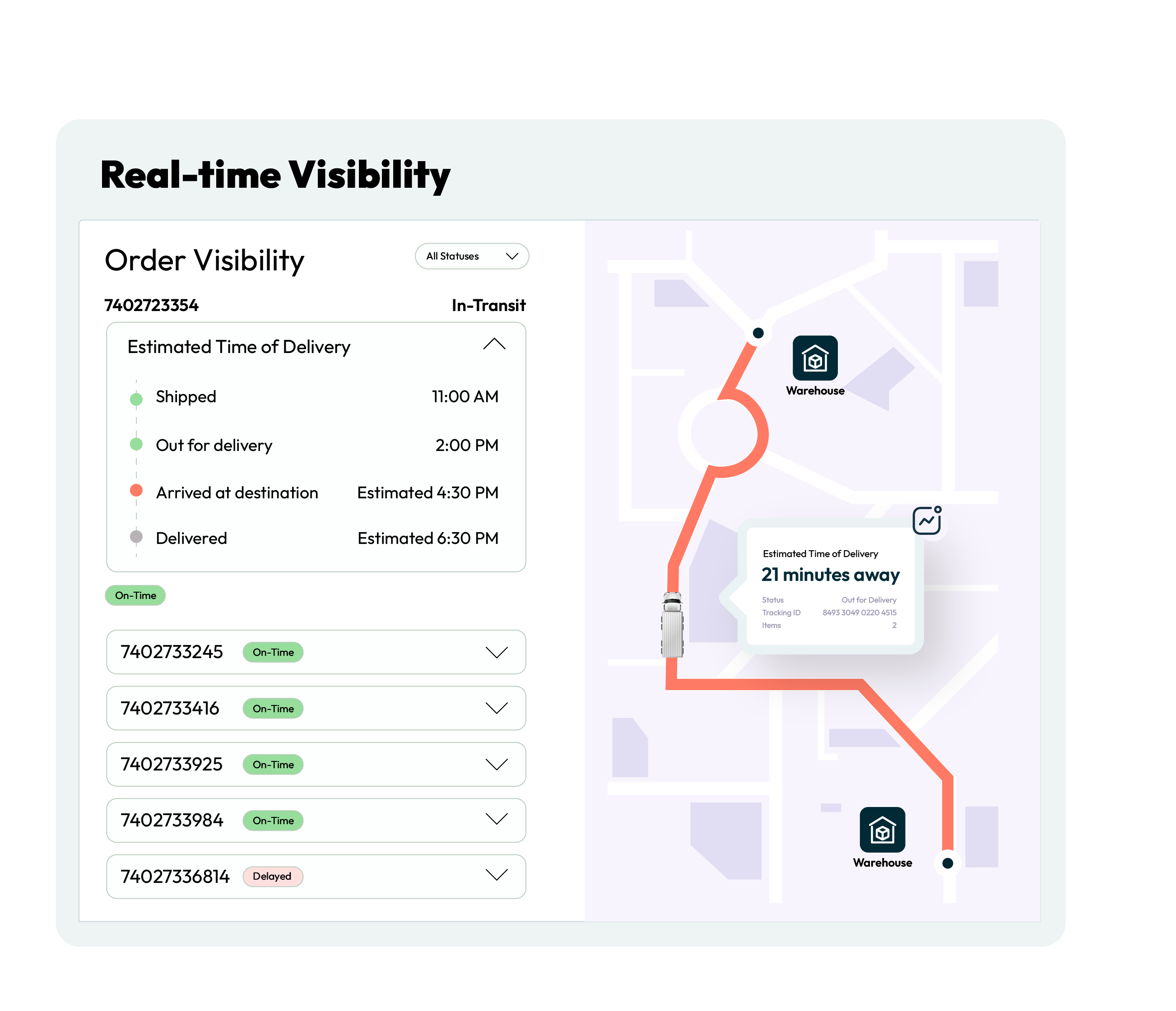- Route
Truck Route Strategies That Improve Compliance and Slash Fuel Costs
Across modern supply chains, where fuel prices are volatile and regulatory oversight is tighter than ever, truck route optimization isn’t just a back-office function; it’s a strategic advantage.
According to a recent American Transportation Research Institute report, fuel prices made up 24% of a motor carrier’s per-mile operating costs.
Meanwhile, the Federal Motor Carrier Safety Administration (FMCSA) continues to enforce strict Hours of Service (HOS) compliance standards. This puts pressure on fleet operators to meet delivery SLAs without overstepping driver work limits.
For dispatchers and supply chain managers responsible for navigating these challenges daily, route planning becomes increasingly complex due to these twin challenges. They would need a smarter approach that can balance compliance, operational efficiency, and cost control. And this is exactly where modern truck route strategies, powered by AI-driven software, can be helpful.

The Shortcomings of Traditional Truck Routing
Conventional truck route planning often depends on traditional maps, manual dispatch, and basic GPS tools. While functional in low-volume, low-complexity environments, these tools lack the intelligence to respond to:
- Real-time traffic and weather conditions
- Dynamic delivery windows
- Complex compliance constraints (HOS, vehicle type restrictions)
- Fuel price fluctuations across regions
This results in inefficient route allocation, underutilised capacity, driver fatigue, missed SLAs, and increased operating costs. A truck route map online might show the shortest path, but it won't factor in real-world logistics variables, unless it's built for trucks, data, and decisions.
Intelligent Truck Routing: The New Normal
AI-powered truck routing software introduces dynamic, multi-constraint planning that goes far beyond conventional route mapping. It helps businesses:
- Reduce total miles travelled
- Improve asset utilisation
- Optimize fuel stops
- Ensure regulatory compliance
- Increase route predictability and SLA adherence
FarEye’s truck routing solution is designed to do just that. Leveraging machine learning algorithms, FarEye allows dispatchers to plan both FTL and LTL routes that factor in delivery time windows, driver availability, vehicle specifications, and road constraints, all in real-time.
8 Strategic Framework for Smarter Truck Routing
Below are eight actionable strategies that enable dispatchers and supply chain managers to optimize their truck routes while ensuring compliance and controlling costs.
- Strategy 1: Align Routing With Driver Hours Compliance
Compliance with FMCSA HOS rules isn’t optional. Violations can result in fines, service delays, and even risk suspension. FarEye enables dispatchers to build truck routes that proactively incorporate driver rest breaks, shift patterns, and daily driving limits.
By considering driver rosters, time-on-duty, and mandatory break periods, FarEye helps prevent compliance breaches before they happen. In multi-day truck routing scenarios, it automatically schedules overnight stops to align with labour laws without compromising SLA commitments.
- Strategy 2: Plan Multi-Day and Multi-Stop Routes Efficiently
High-volume logistics networks often require long-haul deliveries with multiple drop points. FarEye’s routing engine supports both multi-day and multi-stop routing with advanced optimization logic. It consolidates deliveries heading in similar directions into fewer trucks, reducing fleet requirements and fuel consumption.
The software’s co-mingling logic helps minimise empty backhauls and load imbalances, especially in LTL environments. This strategic bundling of orders boosts vehicle fill rates, cuts down transit time, and ensures a higher cost-to-mile ratio.
- Strategy 3: Factor in Real-World Constraints
Any effective truck route must reflect the realities of the road. FarEye incorporates:
Road parameters: Bridge height, tunnel access, no-entry zones
Vehicle specifications: Length, height, axle count, cargo type (e.g., refrigerated)
Order-level constraints: Delivery urgency, weight, and handling requirements
This results in precise, truck-specific routing rather than one-size-fits-all paths. When dispatchers use a general truck route map online, they risk misjudging constraints, a mistake that can cost dollars, hours, and incur additional fines.
- Strategy 4: Use Live Data to Enable Dynamic Rerouting
Live rerouting based on real-time conditions is essential to protect SLAs. FarEye’s machine learning layer constantly monitors GPS signals, weather data, traffic updates, and road closures. If a delay is likely, it triggers automatic rerouting, ETA recalculations, and proactive customer updates.
For dispatchers, this means fewer manual interventions and higher confidence in daily fleet performance. For customers, it means reliable deliveries that stay on schedule, even when disruptions arise.
- Strategy 5: Optimize Fuel Stops for Lower Fuel Costs
Fuel is the single largest variable operating cost. FarEye allows planners to schedule refuelling at optimal points along the truck route, factoring in current fuel prices, distance between stops, and vehicle efficiency.
By aligning these fuel stops with required driver breaks, it maximises both compliance and cost efficiency. Over time, these micro-savings compound into significant reductions in per-mile delivery costs.
- Strategy 6: Minimize Idling and Dwell Times
Inefficient load/unload windows lead to high dwell times and driver idling, both major contributors to wasted fuel and missed route targets. FarEye addresses this through SMART Service Time predictions.
By analysing historical delivery data across geographic hexagons, it predicts how long a stop will take based on service patterns. This enables more accurate scheduling and tighter route blocks, improving asset availability.
- Strategy 7: Automate Load Planning With AI
AI-based automation doesn’t just optimize routes, it also simplifies route generation. FarEye’s dispatchless engine allows high-volume dispatchers to reduce route planning time by up to 90%. Instead of spending hours assigning loads, dispatchers can create optimised truck routes within minutes, even across hundreds of orders.
This drastically increases agility in managing daily volumes and opens the door to cost-effective scalability.
- Strategy 8: Integrate SLA and Rate-Based Routing Logic
FarEye empowers planners to match the right carrier (private fleet, 3PL, gig worker) to the right route using rate-based logic. For example:
Route A: SLA critical, uses private fleet for guaranteed compliance
Route B: Flexible window, outsourced to a gig carrier for lower cost
By orchestrating deliveries in this way, organisations achieve a balance between service quality and cost efficiency, without compromising either.
Truck Route Software Isn’t Just a Map; It’s an Operational Strategy
A truck route map online can show a visual path, but it can’t drive results. The real value comes from software that learns, adapts, and delivers. FarEye’s AI-powered truck routing solution transforms what was once a traditional process into a responsive, intelligent system.
By embracing these strategic routing practices, supply chain leaders not only reduce fuel consumption and compliance risks but also gain a measurable edge in service performance, operational cost, and fleet utilisation.
In an industry defined by movement, efficiency isn’t just a metric. It’s a mindset. And with FarEye, it’s a capability that delivers, day after day, route after route.
Source:

Komal Puri is a seasoned professional in the logistics and supply chain industry. As the AVP of Marketing and a subject matter expert at FarEye, she has been instrumental in shaping the industry narrative for the past decade. Her expertise and insights have earned her numerous awards and recognition. Komal’s writings reflect her deep understanding of the industry, offering valuable insights and thought leadership.
Let's Talk to Our Experts and Optimize Your Deliveries Today!
An expert from our team will reach out within 24 hours



